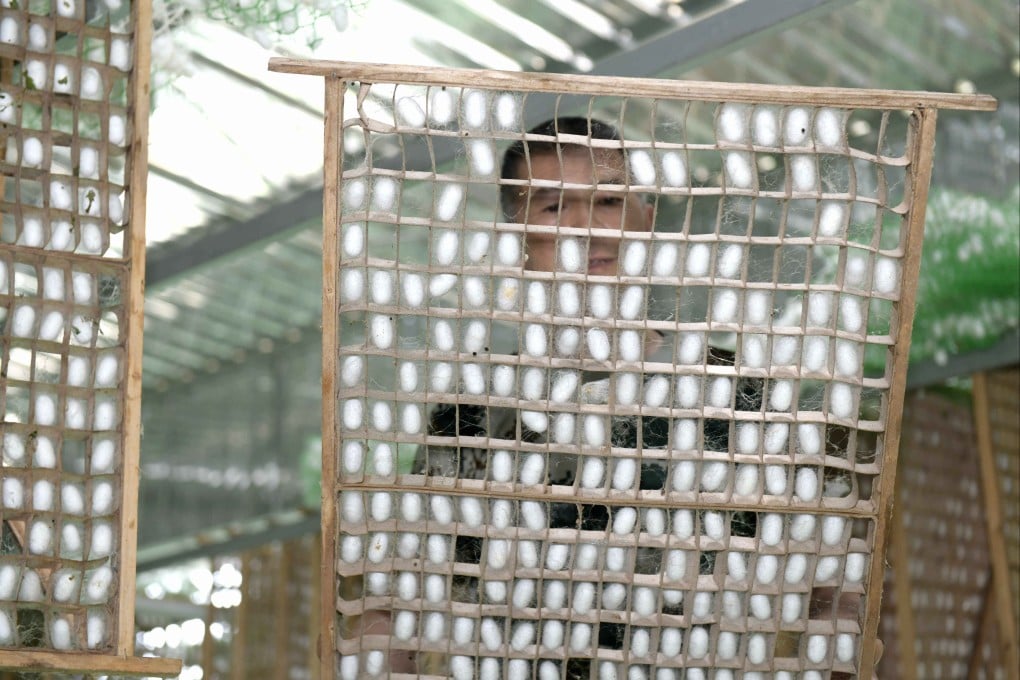How silk is made, the fabric’s Chinese history and journey west, and farmers’ unlikely figure of worship
- Author Victoria Finlay traces the fascinating origins of China’s silk industry in this edited excerpt from her latest book

“They can’t fly,” says the manager of the Brochier Soieries silk shop in the old quarter of Lyons, France. “Their bodies are too fat. Or their wings are too big. Or something. Anyway, they’d never get off the ground.”
I’ve never seen a silk moth before. And now here are two, on a table outside this shop. When I was a child, I learned that if it flies by day it’s a butterfly and if it flies by night it’s a moth. But what if it doesn’t fly at all?
The manager, Eliza Ploia, smiles. “There are some other differences between a butterfly and a moth,” she says, and I search on my phone for a list: moths have ears and butterflies can’t hear.
Butterflies are usually coloured, and moths are usually more plain. Butterflies eat and drink and moths don’t even have mouths. When moths are resting they usually keep their wings open; butterflies usually have them closed. And finally, and this is of course critical for silk, moth caterpillars generally spin cocoons, and butterfly caterpillars generally don’t.
I look at the moths on the table. They’re balancing on wooden rods sticking up from what looks like a cribbage board. Their wings are huge and fluffy, like white rabbit ears or toy donkey ears, and their antennae are like oversized eyelashes fringed with dark threads. Their eyes are black buttons, and their plump bodies are covered with soft hair. Below is a broken cocoon from which one of them has emerged. It’s the size of a robin’s egg and yellow as a lemon. All around is a delicate mesh of fibre catching the sunlight.
“Can I touch?” I ask. It feels soft. When I close my eyes I’m not even sure my fingers are making contact with anything. I think of how the fineness of a silk filament was once the mark against which all textiles were measured.

